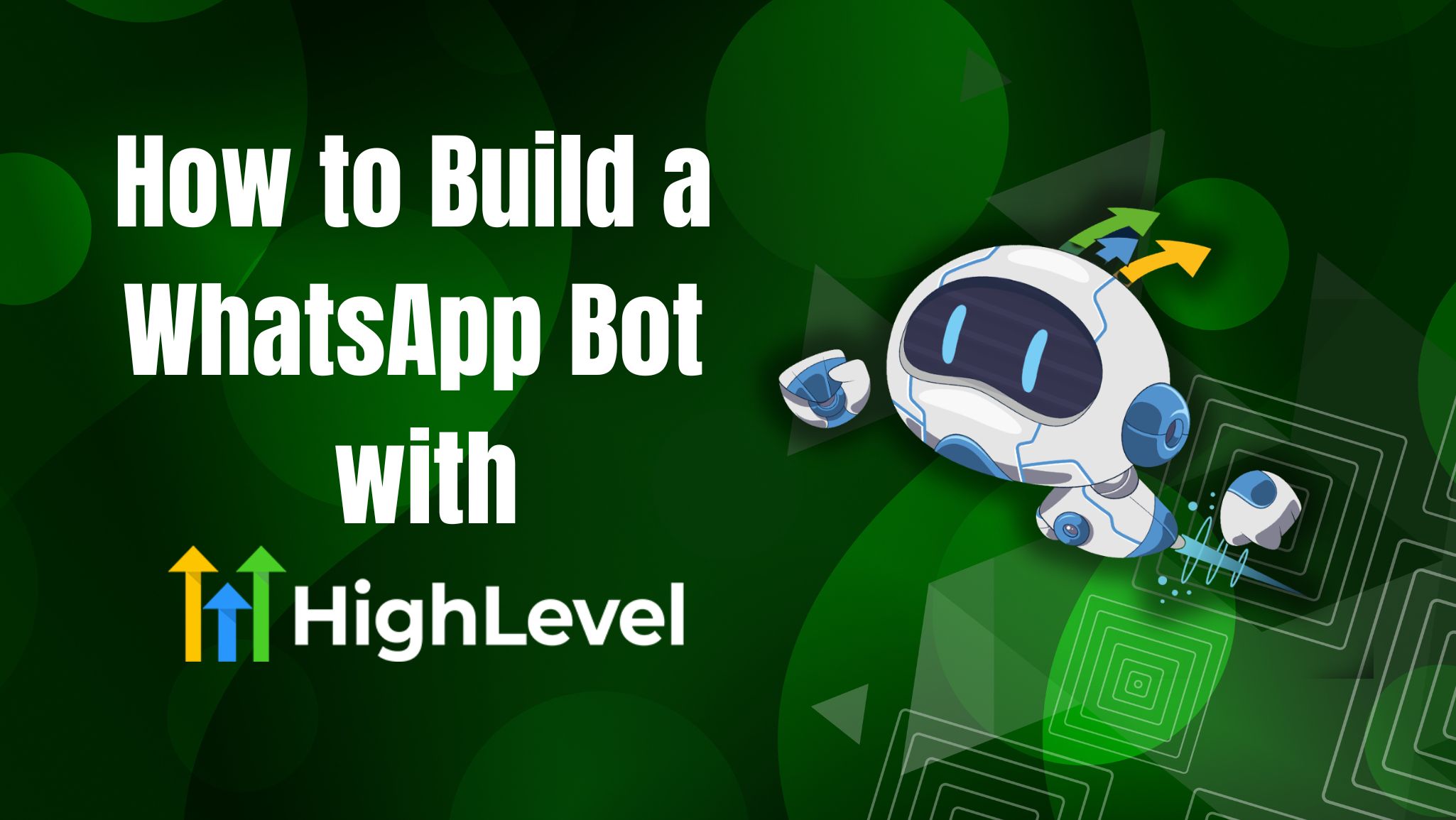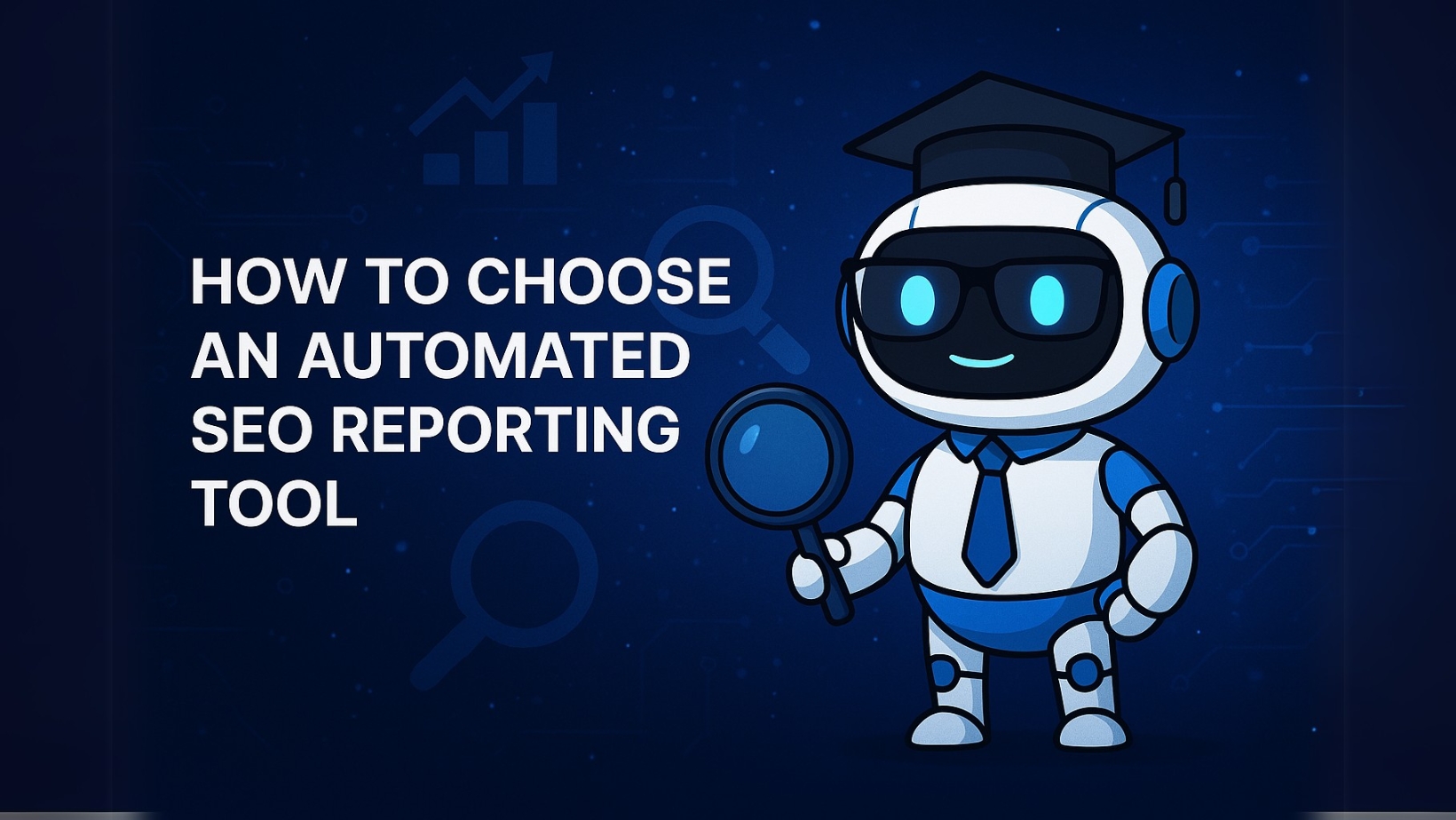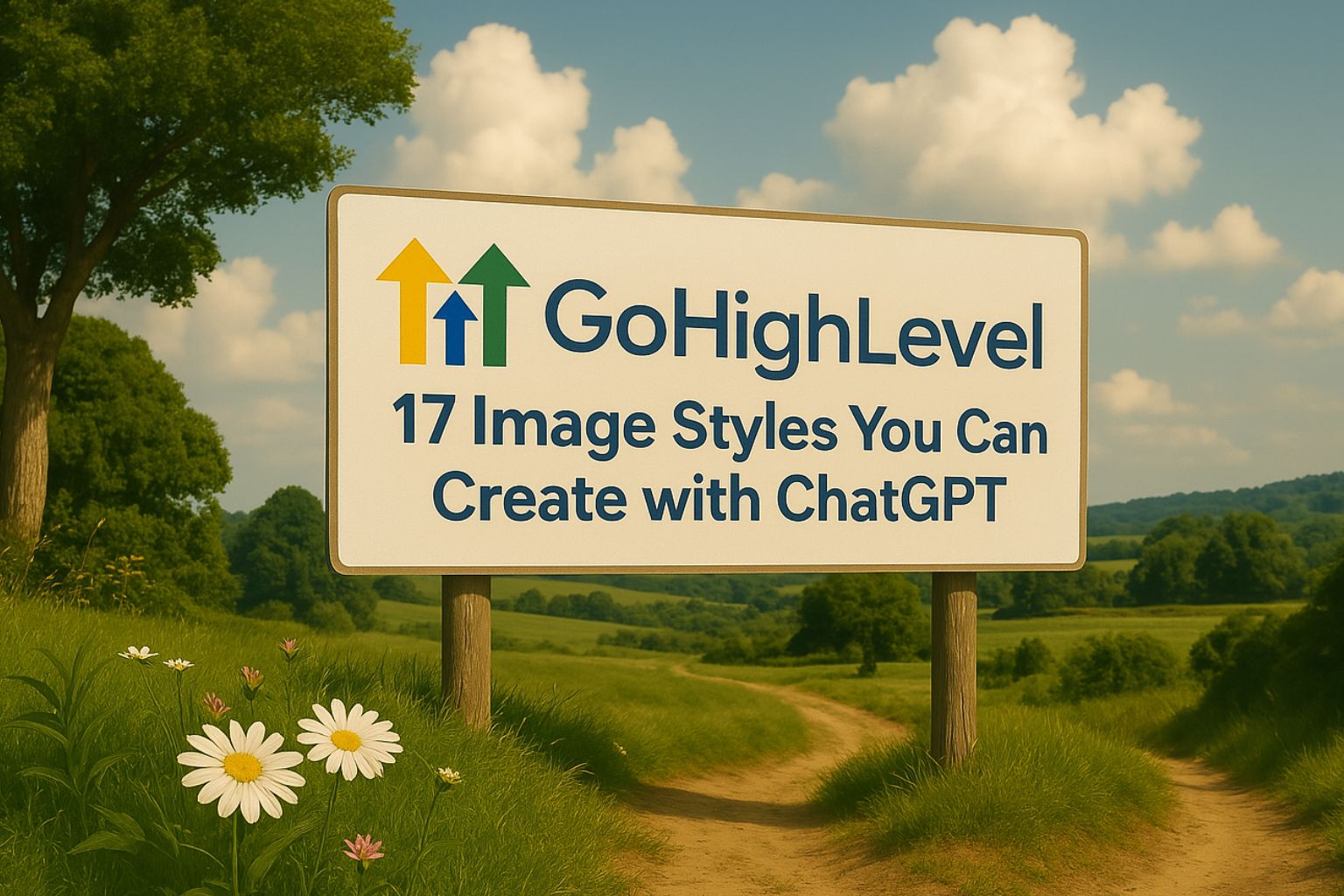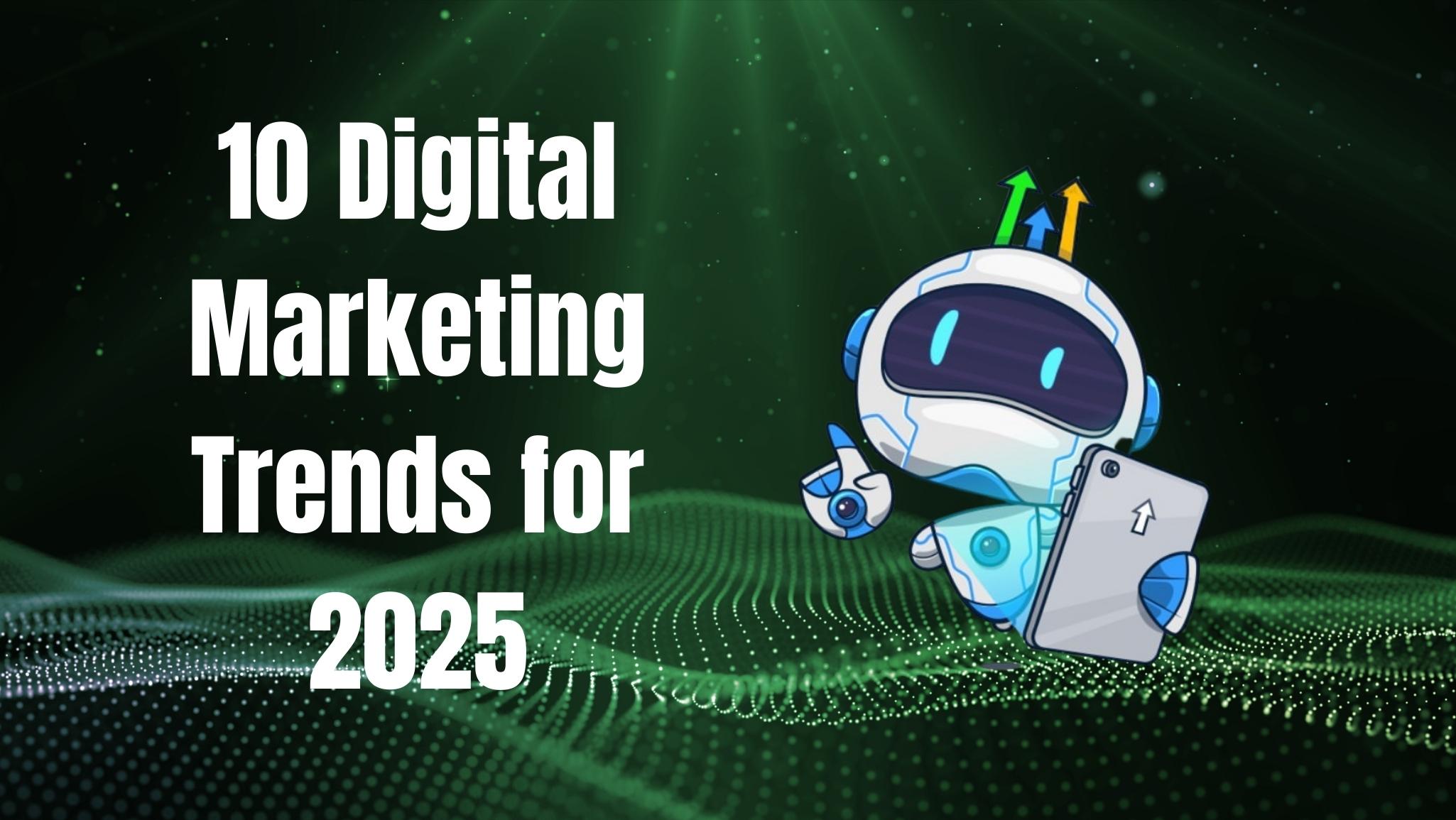
WhatsApp isn’t just for personal chats – it’s a powerful channel for businesses to engage customers. With over 2 billion users globally and an open rate of about 98% (versus roughly 20% for email), WhatsApp messages almost guarantee your content gets seen.
This high engagement makes WhatsApp an ideal platform for customer communication. By using WhatsApp automation, businesses can respond to customers instantly, provide 24/7 support, and nurture leads without manual effort. Automated WhatsApp bots (chatbots) help answer frequent questions and send information in real-time, improving the customer experience
GoHighLevel is an all-in-one marketing and CRM platform that now offers a convenient solution for building WhatsApp bots. Instead of coding a chatbot from scratch, GoHighLevel provides an easy interface to set up your WhatsApp Business API integration, design automated conversations, and connect those chats to your CRM and marketing campaigns. In this guide, we’ll walk you through how to make a WhatsApp bot in GoHighLevel step by step. Whether you’re looking to build a WhatsApp chatbot for customer support, lead generation, or follow-ups, this guide will help you get started with conversational AI on WhatsApp.
Step-by-Step Guide to Building a WhatsApp Bot in GoHighLevel
Building a WhatsApp bot with GoHighLevel is easier than you might think. Follow these simple steps from account setup to deploying your bot:
1.- Sign Up for GoHighLevel.
If you’re new to GoHighLevel, head over to their website and sign up for an account. GoHighLevel offers a free trial (often up to 30 days by the next link) for new users, so you can try out the platform with no risk. After signing up, log in to your GoHighLevel dashboard. (If you already have an account, you’re all set to proceed.)
2.- Connect WhatsApp to GoHighLevel.
Once you’re in the GoHighLevel dashboard, the next step is to integrate your WhatsApp Business number. GoHighLevel’s WhatsApp integration uses the official WhatsApp Business API, which means you’ll need a WhatsApp Business account (linked to a Facebook Business Manager). GoHighLevel makes this process straightforward by guiding you through the setup in the platform settings. Navigate to Settings -> WhatsApp in your GoHighLevel account and look for an option to “Add WhatsApp”. Clicking this will prompt you to sign in with Facebook and verify your WhatsApp Business details.
If you go with the built-in LeadConnector method, you can buy a phone number in GoHighLevel and link it to WhatsApp in a few clicks. If you use Twilio, you’ll connect your Twilio account and WhatsApp-approved number. In both cases, follow the on-screen prompts to link your number and verify it (you’ll receive a code via SMS or voice call to confirm the number). Once completed, GoHighLevel will show that WhatsApp is connected – now you’re ready to chat with people on WhatsApp through the platform
3.- Design Your Chatbot Workflow.
With WhatsApp now integrated, it’s time to build the bot itself – essentially, create the automated messages and conversation flow. GoHighLevel uses a visual Workflow Builder to automate conversations and tasks. Go to the Automation section (Workflows) and create a new workflow for your WhatsApp bot. Here’s an easy way to set it up for a simple Q&A bot or autoresponder:
-
- Choose a Trigger: Select a trigger like “Incoming WhatsApp Message” or “Customer Replied (WhatsApp)”. This tells the system when to start the bot workflow – in this case, whenever you receive a WhatsApp message from a user. (GoHighLevel introduced dedicated WhatsApp triggers in its workflow builder, so you can target WhatsApp specifically.)
- Add Actions for Responses: After the trigger, add a sequence of actions that define the bot’s replies. For example, use the “Send WhatsApp Message” action to have the bot reply automatically. You can type out a greeting or answer. GoHighLevel allows you to personalize messages using custom values (like the contact’s name) just as you would with an SMS or email. You can also include images or emojis in your responses to make them engaging.
-
Implement Keywords or Menus (Optional): For slightly more advanced bots, you can set up keyword-based responses. For instance, create an If/Else condition or separate workflows to handle specific keywords. If a customer’s message contains the word “pricing”, your bot could automatically send back a pricing info message. Similarly, if someone texts a single word like “Offer” or “Help”, you can trigger a preset reply. GoHighLevel’s workflow can check the incoming message text and respond accordingly. (Many businesses use one-word triggers – e.g. texting “INFO” could add the person to a list and reply with more details.) This way, your WhatsApp bot can handle FAQs or route the conversation based on what the customer needs.
-
Personalize and Save Templates: If you find yourself sending the same replies often (like a welcome message or directions to your store), GoHighLevel lets you create message templates. In the Conversations > Templates section, you can save common WhatsApp replies to reuse later . This is especially useful because WhatsApp Business API requires using pre-approved templates for certain outbound messages (like notifications outside the 24-hour window). By creating templates in GoHighLevel, you ensure your messages stay compliant and you can quickly insert them into workflows.
-
Common Bot Flows: For beginners, a simple flow might be: greet the user, present a menu of options or ask how you can help, then respond based on keywords. For example, your bot’s first message could be, “Hi! Welcome to [Your Business]. How can I assist you today? Reply with 1 for Sales, 2 for Support, or 3 for Hours.” You can then use conditions: if the reply is “1”, send sales info; if “2”, ask what support issue they have (or connect to a human agent); if “3”, send your business hours. Keep the initial menu simple so users know what the bot can do.
- Choose a Trigger: Select a trigger like “Incoming WhatsApp Message” or “Customer Replied (WhatsApp)”. This tells the system when to start the bot workflow – in this case, whenever you receive a WhatsApp message from a user. (GoHighLevel introduced dedicated WhatsApp triggers in its workflow builder, so you can target WhatsApp specifically.)
4.- Add Conversational AI for Smart Responses:
One of the exciting features of GoHighLevel’s WhatsApp integration is the ability to incorporate AI-powered conversations. Beyond simple keyword responses, GoHighLevel has introduced an advanced AI chatbot capability – essentially bringing conversational AI (like ChatGPT-style responses) into WhatsApp. For example, GoHighLevel offers an AI-driven booking bot that can handle appointment scheduling in a human-like way.
The bot can understand what the user is saying (to an extent) and reply with appropriate prompts. If a customer starts chatting something like, “I’d like to book a consultation next week,” the AI bot can interpret this and guide them through booking an appointment, asking for the date/time and confirming the booking, all through WhatsApp. GoHighLevel’s AI bot is designed to recognize nuances in responses and craft personalized, natural-sounding replies.
5.- Test Your WhatsApp Bot:
Before rolling it out to all your customers, always test your bot. GoHighLevel allows you to do test conversations. Add yourself or a colleague as a contact in GoHighLevel with a WhatsApp number you can use for testing. Then trigger the workflow by sending a message from WhatsApp and see how the bot responds. Check that each step works: Did the correct welcome message send? Do keyword triggers respond with the right info? Testing ensures your automated replies make sense and there are no dead-ends. If something isn’t working as expected (perhaps a condition didn’t match, or a message needs tweaking), go back into the workflow and adjust it.
6.- Deploy and Activate the Bot:
Once you’re satisfied with testing, turn the workflow Active (there’s usually a toggle for activating a workflow in GoHighLevel). Now your WhatsApp bot is live! Anyone who messages your connected WhatsApp number will get the automated responses you set up. Be sure to let your audience know they can reach you on WhatsApp. For example, put a WhatsApp chat link on your website or social media so customers can easily start chatting. GoHighLevel will handle incoming messages and your bot will reply instantly, or forward to you/your team if needed.
That’s it – you’ve built and launched a WhatsApp chatbot using GoHighLevel, all without any coding. It’s extremely simple and mostly a matter of configuring settings and writing the messages you want the bot to send. As you gain confidence, you can add more complexity to your bot, but even a basic setup can massively improve your responsiveness to customers.
Use Cases and Benefits of WhatsApp Automation.
What can you actually accomplish with a WhatsApp bot? Let’s explore some common use cases and the benefits businesses are seeing. Virtually any business that deals with customer inquiries or lead follow-up can leverage WhatsApp automation – here are a few popular examples:
24/7 Customer Support.
One of the top uses of WhatsApp bots is to handle customer support queries. A chatbot can greet customers and answer frequently asked questions instantly, at any hour. This is a huge win for customer satisfaction – no more waiting until the next business day for a simple answer.
For instance, an e-commerce store can have a WhatsApp bot that provides order status updates or return policy info on demand. A telecom company might use a bot to help customers check their data balance or pay bills via WhatsApp. In fact, about 40% of businesses on WhatsApp use the platform to offer customer support, and a majority of customers prefer messaging a company over emailing or calling
By deploying a support bot, you ensure customers get quick answers. And if the question is too complex, the bot can always escalate to a human agent by alerting your team on GoHighLevel to step in. This blend of bot + human support gives customers a smooth experience.
Lead Generation and Qualification.
WhatsApp isn’t just for responding – it’s great for proactively engaging potential customers. Businesses use WhatsApp bots for lead generation by connecting it to ads or websites. For example, you might run a Facebook ad that, when clicked, opens a WhatsApp chat with your bot. The bot can then welcome the user (“Hi! Interested in our services? I’d be happy to answer questions.”) and ask a couple of simple qualifying questions.
A real estate agency might have a bot ask, “Are you looking to buy or rent?” and then “What’s your budget range?” to gather key info from a new lead. The bot collects these details and can schedule a follow-up call or appointment if the lead is promising. This automated conversation saves your sales team time – by the time you talk to the lead, you already know their needs.
Conversational AI plays a role here too: a smarter bot can engage the lead in a more natural dialogue, keeping them interested. Overall, using WhatsApp automation for lead gen can significantly increase conversion rates because you’re responding to inquiries instantly while they’re “hot.” Leads don’t fall through the cracks since the bot is always attentive.
GoHighLevel even lets you integrate these leads into your CRM automatically, so you can trigger email nurturing or add them to your pipeline for manual follow-up as needed.
Follow-Ups and Reminders:
Another powerful use case for WhatsApp bots is automating follow-ups. Since WhatsApp messages are almost always read by the recipient , it’s an excellent channel for sending reminders and follow-up messages that you want customers to see.
With GoHighLevel, you can schedule WhatsApp messages or trigger them based on events. For instance, imagine you run a clinic or a salon – you can set up your bot to send appointment reminders a day before a scheduled visit (“Don’t forget your appointment tomorrow at 3 PM. Reply ‘Confirm’ to confirm or ‘Reschedule’ to change the time.”). The bot can even handle the confirm/reschedule logic automatically.
Another example: an online store can automate follow-ups for abandoned carts or post-purchase. If a customer inquires about a product but doesn’t complete the purchase, your WhatsApp bot could message them the next day with a friendly reminder or a discount offer to encourage them.
For existing customers, you can send satisfaction survey links or request feedback via WhatsApp. Automated follow-ups ensure consistent communication with minimal effort. They help nurture leads (e.g., a series of tips sent over a week after someone signs up) and improve customer retention (e.g., renewal reminders, re-engagement messages for inactive customers).
In addition to these, there are many industry-specific ways to leverage WhatsApp bots:
- E-commerce & Retail: Send order confirmations, shipping updates, and handle customer inquiries about products. For example, restaurants and food delivery services use WhatsApp chatbots to confirm orders and provide delivery updates, streamlining the delivery process . Retail businesses can use bots to showcase new collections or assist with tracking packages.
- Real Estate: Qualify property inquiries and schedule viewings through chat. As mentioned, real estate agents deploy chatbots to share property listings, arrange house tours, and answer buyer questions – speeding up the sales cycle and improving responsiveness.
- Travel & Hospitality: Manage bookings and provide itinerary info. A travel agency’s bot can send ticket confirmation, gate updates, or respond to “What’s my booking reference?” questions on WhatsApp. Hotels can use bots for concierge services, letting guests request towels or room service via chat.
- Healthcare: Clinics use WhatsApp bots for appointment bookings and sending test results or health tips securely. During the COVID-19 period, for example, many health organizations employed WhatsApp bots to answer FAQs and even do initial symptom checking.
- Education: Schools and universities automate answers to common queries on admissions, course info, or deadlines. A bot can guide prospective students through an application process by providing links and information when asked.
No matter the industry, the benefits of using a WhatsApp bot include faster response times, better customer engagement, and the ability to handle large volumes of inquiries simultaneously (something a human team would struggle with).
Customers appreciate the convenience – 67% of consumers prefer messaging a business (through apps like WhatsApp) over email or phone calls, and they feel more connected to brands that are accessible via chat. Moreover, businesses often see improved efficiency and cost savings; what a team of agents might do in an hour can be achieved in minutes by an automated system handling routine queries.
By automating repetitive conversations, your human staff are free to focus on more complex or high-value tasks, improving overall productivity.
WhatsApp Pricing with GoHighLevel
1. Monthly Subscription Charge:
Agency Charge: Each sub-account (client) that utilizes WhatsApp messaging incurs a monthly subscription fee of $10 USD, billed to the agency.
2. Conversation-Based Pricing:
WhatsApp employs a conversation-based pricing model, charging per 24-hour conversation session rather than per individual message.
-
Conversation Categories.
- Marketing Conversations: Initiated to promote products or services.
- Utility Conversations: Transactional messages, such as order confirmations or delivery updates.
- Authentication Conversations: Messages that authenticate users, like OTPs.
- Service Conversations: Customer-initiated messages seeking support or information.
-
Pricing Variations.
Rates differ based on the conversation category and the recipient’s country or region. For instance, marketing messages sent to the U.S. have a base rate of $0.0263.
3. Free Tier Conversations:
Each WhatsApp Business Account receives 1,000 free service conversations per month across all business phone numbers. This free tier is refreshed monthly.
4. Rebilling Opportunities:
Agencies have the flexibility to rebill clients at customized rates. By default, the client-facing subscription rate is set at $29.99 per month, allowing agencies to generate a profit margin of $19.99 per client each month.
5. Additional Considerations:
- Payment Processing Fees: A 5% Stripe fee is added to the rates, which should be factored in when setting up rebilling structures.
- Regional Variations: It’s essential to note that messaging rates vary by region. For precise and up-to-date rates, consulting the official GoHighLevel documentation or contacting their support is advisable.
Conclusion
WhatsApp automation is a game-changer for businesses, and GoHighLevel makes implementing it extremely approachable. In this article, we’ve covered how to build a WhatsApp chatbot step-by-step, highlighted the powerful features of GoHighLevel’s conversational AI, and explored real-world use cases. The bottom line is that a WhatsApp bot can elevate your customer communication – leading to quicker responses, higher customer satisfaction, and more conversions – all while saving you time and effort.
If you’re excited to improve your customer experience with a WhatsApp bot, now is a great time to try GoHighLevel. The platform offers a 30-day free trial for new users , giving you plenty of time to experiment with WhatsApp automation risk-free.
Within a few minutes of signing up, you can have your WhatsApp Business account connected and your first bot workflow up and running. No other solution combines CRM, marketing automation, and WhatsApp conversational AI as seamlessly as GoHighLevel does – this all-in-one approach is a unique benefit, allowing your bot to directly tie into your leads, pipelines, and campaigns without juggling multiple tools.
Sign up for GoHighLevel’s free trial and build your WhatsApp chatbot today. Take advantage of GoHighLevel’s easy workflow builder and AI features to create a bot that will answer questions, capture leads, and delight your customers automatically.
With GoHighLevel’s WhatsApp automation, you’ll stay ahead of the competition by being available to your customers 24/7 on a platform they love. Don’t miss out on the opportunity to streamline your business communications – try GoHighLevel now and watch your customer interactions reach a new level of efficiency and personalization!
Related Posts



